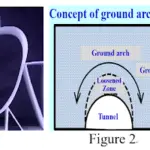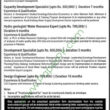While the idea of mixing your own concrete might seem daunting initially, with the right equipment, materials, and tools, it’s an achievable task that can yield fantastic results. This article will give you detail information regarding different methodology for concrete mixing.

Choosing the Ideal Concrete Mix for Your Project
Before delving into the mixing process, selecting the appropriate concrete mix is paramount. Opting for preblended, bagged concrete mixes, such as well-known brands like Quikrete and Sakrete, can save you the hassle of measuring and proportioning components. These mixes can be easily acquired from both physical home improvement stores and online suppliers. Moreover, they are specifically designed to facilitate the creation of small batches of concrete, often necessitating only the addition of water.
Calculating the quantity of bagged mix required hinges on your project’s approximate dimensions. Bagged mixes are usually available in sizes ranging from 40 to 80 pounds. As a reference point, a standard 40-pound bag will yield around 0.30 cubic feet of concrete.
To determine the quality of concrete and enhanced the estimation process, variety of online calculators are available to determine the quantity of concrete in SI and FPS units.
It’s important to note, however, that bagged mixes are impractical for larger-scale endeavors like driveways or substantial patios and pool decks.
Also Read: How to Paint Concrete Floors to Look Like Stone?
Mixing Concrete: Various Methods for Different Projects
Depending on the scale of your project, there are different approaches to mixing concrete that cater to your specific needs. Here are the main methods along with the tools required:
Mixing Concrete in a Bucket
Tools Needed
- Plastic bucket or utility tub (5-gallon capacity or larger)
- Margin trowel or power drill equipped with a paddle mixer attachment (optional)
- Measuring pail or empty gallon milk jug for water measurement (optional)
Procedure
- Empty the designated quantity of bagged mix into the bucket.
- Create a depression in the center of the mix.
- Gradually add approximately three-quarters of the recommended water amount from the package directions to the mix’s center.
- Mix the material gradually using the trowel or paddle mixer.
- Introduce the remaining water as necessary to attain the desired workable consistency.
Best Suited For:
Smaller projects requiring 30 pounds of concrete or less, such as concrete planters or stepping stones.
Also Read: How Much PSI to Clean Concrete? – Pressure washer
Like Us on Facebook!
Mixing Concrete in a Wheelbarrow
Tools Needed
- Wheelbarrow
- Garden hoe or flat shovel
- Hose with spray nozzle
Procedure
Same as the bucket method, the use of a garden hoe or flat shovel for blending.
Subscribe Us on YouTube!
Best Suited for
Projects requiring 60 to 80 kilos of concrete, such as concrete countertops or fire bowls.
Mixing Concrete in a Portable Mixer
Tools Needed
- Portable concrete drum mixers or mortar mixers (available for rent in varying capacities)
- Wheelbarrow for transporting mixed concrete
Procedure
- Add the required number of bags of mix to the drum.
- Incorporate about three-quarters of the water recommended on the package.
- Turn on the mixer and blend until all components are uniformly combined.
- Gradually add the remaining water to achieve a consistent mixture.
- Avoid overloading the mixer and ensure a minimum of 1 cubic foot of mixer capacity for each 80-pound bag of mix.
Best Suited for
Larger projects requiring multiple bags of mix, such as small patios or sidewalks.
Mixing Techniques for Colored Concrete
Elevating the visual appeal of your concrete creations is attainable by introducing integral color to the mix. This simple process can be executed using either powdered or liquid integral pigments.
The project aesthetic can be enhanced due to addition of these pigments that will imbue the entire batch of concrete.
When incorporating liquid pigments, they should be added to the mixing water, while dry pigments are best included toward the end of the mixing process to ensure even distribution and avoid streaks.
Avoiding Common Mixing Mistakes
One of the most prevalent blunders when mixing concrete is adding excess water. Although water is essential for workability, restraint is key. Many concrete-related issues, such as shrinkage, compromised strength, and cracking, can be attributed to excessive water content. Care should be taken in case of hand mixing to ensure the thorough mixing so that concrete gain the requisite strength.
Aim for a consistent, moldable texture akin to peanut butter or thick pancake batter, without any dry pockets or clumps.
Prioritizing Safety
Whether you’re mixing concrete by hand or using a drum mixer, observing safety protocols is crucial to prevent skin contact and potential lung and eye irritation.
- Wear alkali-resistant rubber gloves and long sleeves to minimize skin contact and chemical burns.
- Don a disposable dust mask to protect against dust inhalation during dry mixing.
- Sport safety glasses to shield your eyes from both dust and wet concrete splatters.
















